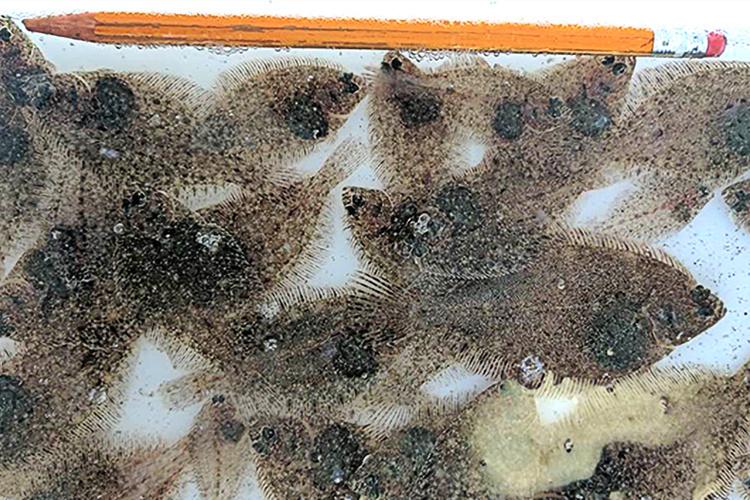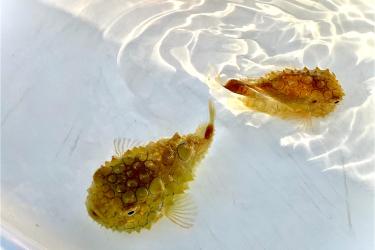Reflecting on Dutch Harbor History
Scientists and crew of the FV Vesteraalen and FV Alaska Knight departed Dutch Harbor on June 2nd to begin the 2017 eastern Bering Sea shelf bottom trawl survey. As we departed, preparations were underway to mark an event that occurred on U.S. soil during WWII, which probably few people outside of Alaska are familiar with. Seventy-five years ago, on June 3 and 4, 1942, an air raid occurred on Dutch Harbor. The Japanese military also temporarily occupied two islands, Kiska and Attu, in the westernmost part of the Aleutian archipelago. In remembrance, all the hotel rooms in town were booked by U.S. Army and Navy veterans now in their nineties, their families, and other dignitaries.
|
|
|
Survey Gets Underway: Bottom Temperatures Cooler Than Previous Years
After departing Dutch Harbor last Friday, both research vessels arrived in eastern Bristol Bay on Sunday morning to begin the survey. After 2 days of sampling, 15 stations were completed; hmmm, let’s see, that’s only 505 stations to go! Bottom water temperatures ranged from 3.1°C to 5.7°C, which so far are more than 1°C cooler than those observed during the last three survey years. See image below to see what stations (colored squares) have been sampled so far.
Summer bottom temperatures in the eastern Bering Sea shelf can vary considerably from one summer to the next and changes in temperatures can affect the community of fish, crabs, and other bottom-dwellers in many interesting and unpredictable ways. That’s why I like coming out here every year, to see what’s new and different. The Bering Sea never disappoints nor ceases to surprise me!
Already this year, I can see more young northern rock sole than I remember seeing in survey-years past. Imagine how difficult it would be to see these juvenile flatfish against a speckled sandy bottom. Stay tuned for more surprises!

Meet the Bloggers

Bob Lauth
Bob Lauth has been a Fisheries Research Biologist for the NOAA Alaska Fisheries Science Center in Seattle for 26 years. Bob leads the Bering Sea Group, which is responsible for conducting summertime surveys of bottom fish, crabs, and other bottom-dwelling creatures in the offshore marine waters of Alaska. Fascinated by Jacques Cousteau as a kid, Bob moved from Chicago to the 'ever-green' Seattle in 1980 to become a marine biologist without the slightest idea how to earn a living. After working three years in a dive store, teaching scuba diving, and doing marine field trips with school kids in the Puget Sound, Bob learned about the 'fishy side’ to marine biology. He enrolled at the University of Washington School of Fisheries, earned a Master’s degree, and then worked for the Inter-American Tropical Tuna Commission at a remote marine lab in Central America before returning to the northwest with his wife to raise a family and pursue his career in fisheries.

Jason Conner
Jason Conner is a fishery biologist who researches the groundfish populations of the Bering Sea. He began his career with NOAA Fisheries in Woods Hole, MA, at the Northeast Fisheries Science Center, helping to record data on whale and seal populations in the Atlantic. He also spent two years in Gloucester, MA, working on fisheries data reporting systems for the Northeast Regional Office. Jason grew up in Denver, CO, but he has had a passion for the ocean since he was two years old. In his free time, Jason enjoys acting in community theater, playing ice hockey, and diving (with and without SCUBA).




